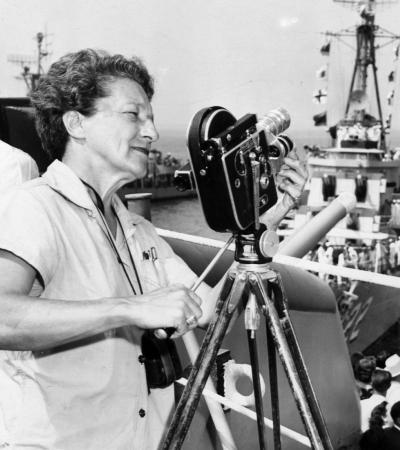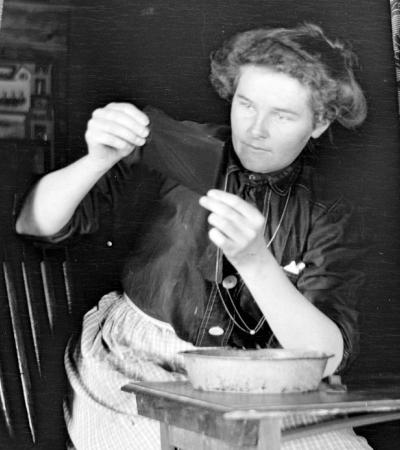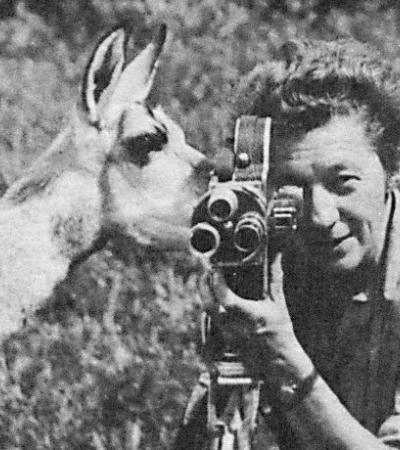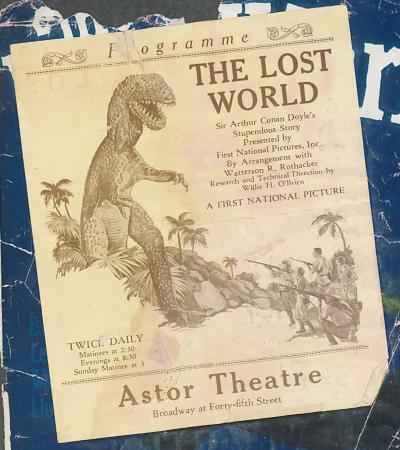There are many female photographers and filmmakers from the nineteenth and twentieth centuries who made notable contributions to the field. However, there are many who may not be familiar names but who contributed groundbreaking work and have ties to the American West. The field of female photographers and filmmakers in this topic illustrate how women quietly went about exploring the world around them, shining a light on the beauty of the subjects they chose to capture on film and in writing, and pushed the boundaries of societal norms of the day.
Many of the earliest female photographers were active at the beginning of the art form. Several of those women were from Britain and France and had close ties to the male pioneers in the development of photography. Women in Northern Europe began opening studios in several countries such as Sweden, France, and Germany. Women from upper class families in Britain began developing photography as an art form in the late 1850s.
Photography reached the United States by 1839 and portrait galleries soon sprang up in urban centers around the country. In the American West, from 1850 to 1950 some 10% of all photographers were women while by 1910 it rose to about 20%. In the early days, most women working commercially were married to professional photographers.
As the process became more accessible and easier to handle, the types of users widened. The introduction of a simple box camera by George Eastman in 1888 led to a craze in snapshot photography. Ads showed women using the camera more often than men. Eastman emphasized to women that his Kodak camera was portable and easy to use. By the turn of the century, as women gained independence and engaged more often in work and activities outside the home, the company encouraged her to take a camera with her! Additionally, women were seen as the memory keepers of the family. What better tool to do so than a camera?
With the onset of the progressive era of the 1920s, the number of women photographers increased dramatically, estimated to be about 5,000. By 1983, about 20% of photographers were women. Today, according to DataUSA about 43% of photographers are female. Along the way, women such as Julia Margaret Cameron, Margaret Bourke-White, Dorothea Lange, Diana Arbus, Annie Leibovitz, Lorna Simpson, and Deana Lawson demonstrated their extraordinary talents.
Women have also made their mark in the motion picture industry from its beginning in the late 1800s. They could be seen behind and in front of the camera as writers, producers, directors, and actors. Women such as Lois Weber, Alice Guy-Blaché, Germaine Dulac, Lotte Reiniger, and Mabel Norman were leaders in the industry and were supported by female screenwriters and some important female producers producing films for a majority female audience. Still, most of these women were white, as people of color were largely kept out of even this emerging art form. By the mid-1920s as the corporate studio system developed and filmmaking became more commercialized, women in general were largely phased out of positions of influence as investors were interested primarily in backing companies controlled by men.
Despite significant contributions, it has historically been difficult for women to make a living in the photographic or film industry. According to a July 2019 story in The New York Times, about 75% of the photography students around the world are women, but only about 15% manage to turn their skills into a career. Women comprised only 20% of all directors, writers, producers, executive producers, editors, and cinematographers working on the top 100 U.S. grossing films of 2019 states an article by New York Women in Film & Television. This underrepresentation has been called the "celluloid ceiling," a variation on the term "glass ceiling," which is a term used to describe an invisible barrier ("glass") in the careers of high-achieving women.
Photographers and filmmakers featured under this topic include Lora Webb Nichols who began taking photographs of family and friends as a teenager in 1899 before becoming a professional photographer in the mining town of Encampment, Wyoming. Also featured is Mildred Stead Capron (pictured above) who from the 1940s to the 1960s produced films and portraits of Native Americans as well as images of her travels in Madeira, the Azores, South Africa, Portugal, Ireland, and the United States. Nichols and Capron created their works with an eye for artistic perspective and thoughtful composition.
Look for more featured women photographers and filmmakers to come.



